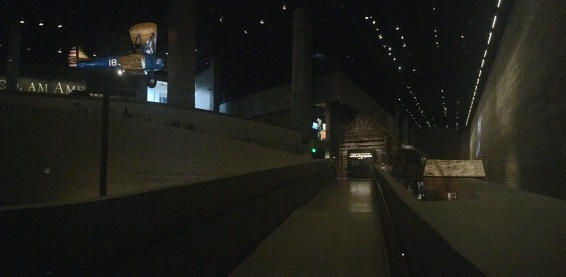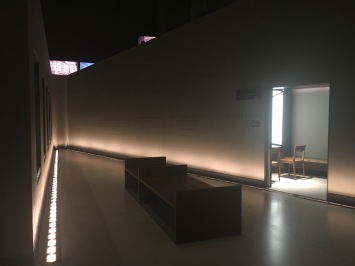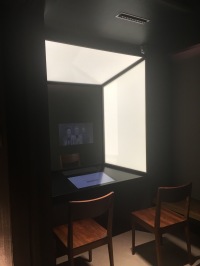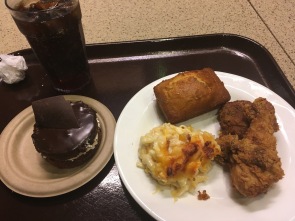One Museum, Many Stories (and Storytelling devices)
Often, when you visit a museum, the mission is to tell the story of a group of people or a place in a cohesive narrative that allows the visitor to learn, understand and hopefully connect with the content. At the Museum of African American History and Culture they managed to connect the visitor to the content around every corner–literally and figuratively.

Recount: The first opportunity to tell a story was in the History Galleries, that were the permanent exhibit on the concourse levels of the museum. The visitor is immediately immersed before you even enter the gallery because you are transported back in time as you descend the elevator (as shown by decreasing dates visible on the elevator shaft). The use of the flowing timeline that allows the visitor to walk thought the galleries and gain an understanding of the way that the African American experiences grew, changed and was shaped by outside events created a personal connection to the many objects on display. Pretty much everyone familiar with American history has heard of the slave ships, the civil war, and the civil rights movement but many have never had the opportunity to tangibly see and feel the African American side of the story– or be able to connect with it on a personal level. The NMAAHC did a wonderful job of telling the story in a way that anyone of any race could connect with!


Remember: One of my favorite parts aspects of storytelling at NMAAHC was the opportunity to tell new stories. The three recording booths, one located on each level of the History Galleries, allowed visitors to share their personal stories with the Museum– with wildly popular success (they have recorded over 20,000 to date!). Though I can’t imagine the man (or intern!) power that they are going to need to get all of those interviews into a searchable/useable format, I’m excited to see what they can do with all of the stories that they have gathered.


Refresh: With the level of emotionally charged material that was presented throughout the museum, it makes sense that NMAAHC would make sure to emphasize places for reflection and rejuvenation. This was very apparent in two separate (and opposite) places– the Contemplative Court and the Food Court. The Contemplative Court was a wonderful way to end the History Galleries– it was quiet, with inspirational quotes and amazingly was able to cut out all of the noise of the gigantic line of people standing just outside of it’s walls. And, as if that wasn’t enough, even the placement was very provocative– just a small entry way to the right of you as you walked out of the History Galleries, easy to miss if yo
u weren’t looking from any other direction but fairly obvious coming from that doorway; the placement was clearly intended for use of the visitor to digest everything they just read and saw. And speaking of digestion– on a more upbeat note– even the food court was a way to help people engage with the African American experience. I have never exprienced curated food before but NMAAHC seemed to cover every aspect of typical fare– creole, southern, BBQ, and more! Even beyond the food, the captive audience of the diner was presented with walls of photos and quotes surrounded by bright colors that encouraged learning and engagement for the wandering eye. It was an ingenious way to extend the experience and encourage the visitor to never forget exactly where they were and why they were there.
